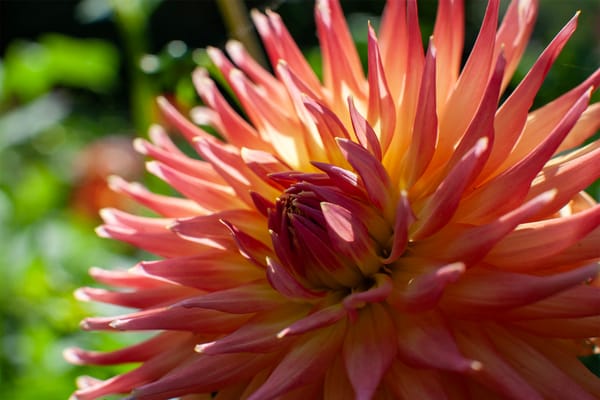For centuries, dahlias have dazzled gardeners and floral enthusiasts with their flamboyant blooms, astonishing variety, and unwavering charm. Yet behind every perfect petal and vibrant hue lies a story not just of cultivation and tradition—but of science, innovation, and discovery. Today, the dahlia stands at the crossroads of horticultural heritage and cutting-edge research, as advances in genomics and molecular breeding open up extraordinary new possibilities for growers, breeders, and gardeners worldwide.
A Flower with a Complex Past
Dahlias have always defied simple classification. Native to the highlands of Mexico and Central America, these charismatic plants found their way into European gardens in the late 18th century, quickly captivating breeders with their ability to produce new forms and colors with astonishing ease. Hybridization flourished, giving rise to an ever-expanding catalogue of shapes—pompons, cactus, dinnerplates, and more.
Yet beneath their flamboyant exterior, dahlias concealed a genetic complexity that baffled even the most dedicated breeders. Their octoploid genome—eight sets of chromosomes instead of the typical two—makes predicting traits a formidable challenge. For decades, this genetic labyrinth was navigated through patient trial and error, relying on the breeder’s eye, intuition, and painstaking selection.
Cracking the Code: The Dawn of Dahlia Genomics
Everything changed in 2023 when a landmark collaboration between the American Dahlia Society and researchers at Stanford and Auburn University produced the first long-read sequencing of a modern dahlia cultivar—‘Edna C.’ This breakthrough yielded the first comprehensive dahlia genome assembly, an achievement as monumental as it was overdue.
For the first time, scientists could map the genetic architecture underpinning the traits breeders had worked with for centuries: color pathways, petal formation, disease resistance, and tuber behavior. Even more remarkable, early studies revealed a surprising genetic unity between wild species and cultivated varieties—a shared ancestral gene pool that explained the seemingly boundless diversity in color, form, and growth habit.
As the sequencing of the remaining 36 recognized wild and cultivated dahlia species continues, breeders now have a genomic roadmap for exploring and preserving the vast genetic wealth of this extraordinary genus.
Armed with genomic data, breeders are embracing Marker-Assisted Selection (MAS)—a method that allows them to identify plants carrying desirable traits at the seedling stage. Gone are the days of waiting months or years for flowers to reveal their secrets. With molecular markers like SSRs (Simple Sequence Repeats) and SNPs (Single Nucleotide Polymorphisms), breeders can select for attributes like petal color, disease resistance, and stem strength before a single bud opens.
This approach accelerates the breeding cycle, improves precision, and opens the door to stacking multiple positive traits in a single cultivar—combining, for instance, unique pigmentation with robust disease resistance and extended vase life. It’s a fusion of classical horticulture and molecular science that promises a new era of intentional, efficient dahlia breeding.
Hybridization for a New Age: Taming Complexity with Science
Traditional hybridization has long wrestled with the complexities of octoploidy, where gene expression and inheritance patterns can seem like a genetic roulette. But with genomic insight, breeders can now manage this complexity, using predictive tools to select parents based on detailed genetic profiles rather than just appearance or pedigree.
Interspecific crosses—once a high-risk gamble—are now guided by genetic markers, allowing breeders to introduce traits from wild species, like novel pigmentation or environmental resilience, while minimizing unwanted characteristics. Backcrossing, once a slow, generational process, is turbocharged by marker tracking, bringing elite traits into cultivated lines with newfound efficiency.
The future even hints at genome editing technologies, such as CRISPR, opening the potential for precise gene targeting in ornamental breeding—a frontier still speculative but tantalizing.
Disease Resistance: The Science of Healthier Dahlias
One of the most compelling promises of genomics lies in the fight against disease. Viral pathogens like Dahlia Mosaic Virus (DMV) have long plagued growers, with infection leading to reduced vigor, distorted growth, and compromised bloom quality.
Recent advances have focused on mapping resistance genes and developing biotechnological approaches—such as RNA silencing—to disrupt viral replication. Meanwhile, meristem culture and molecular testing are ensuring cleaner, virus-free propagation stock, vital for both commercial production and home gardeners.
Though fully virus-resistant dahlias remain elusive, the combination of traditional breeding, marker-assisted selection, and molecular innovation is closing the gap—offering hope for more resilient, healthier plants.
The Genomic Legacy: Shaping Horticulture Beyond Dahlias
The impact of dahlia genome projects extends beyond this single genus. As one of the most genetically complex ornamentals to be sequenced, dahlias are serving as a model for genome research in polyploid plants. Lessons learned here are informing efforts in roses, chrysanthemums, and other ornamentals, reshaping how breeders worldwide approach variety development.
For gardeners, this scientific renaissance means access to a broader diversity of cultivars—plants bred not only for beauty but also for resilience, adaptability, and performance in diverse environments.
A Garden Rooted in the Future
At heart, dahlias remain what they have always been: a source of joy, creativity, and connection to nature. But as science lifts the veil on their genetic secrets, gardeners are invited into a deeper relationship with these captivating flowers—a chance to appreciate not just their beauty, but the intricate biological tapestry that makes them possible.
From garden to genome, the story of the dahlia is one of continual transformation—a living emblem of how tradition and technology can flourish together, ensuring these radiant blooms thrive in gardens, shows, and hearts for generations to come.











